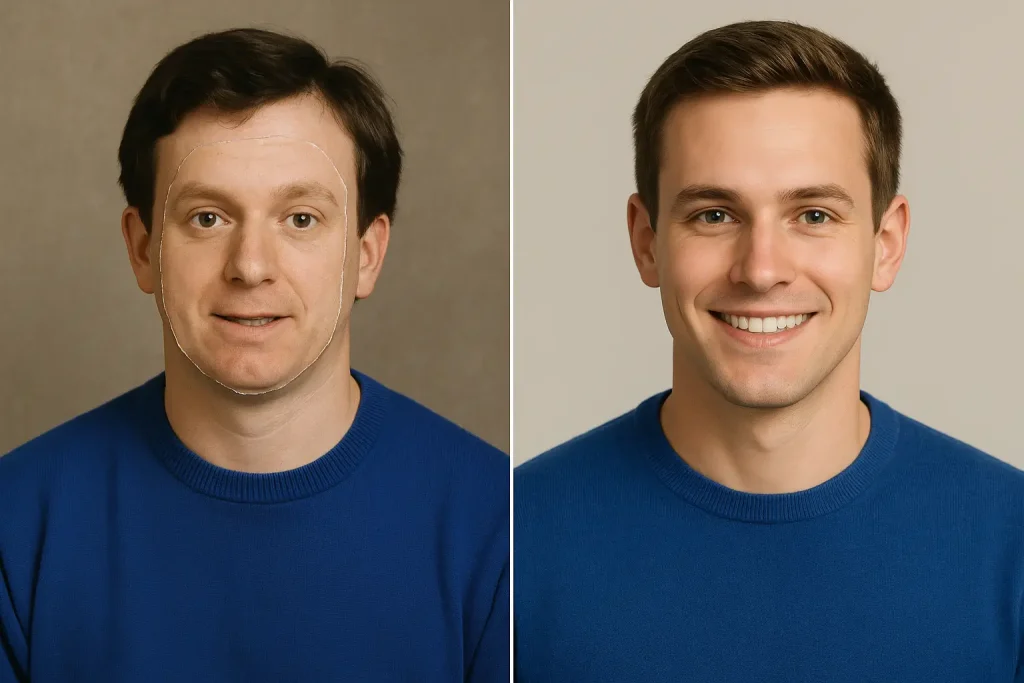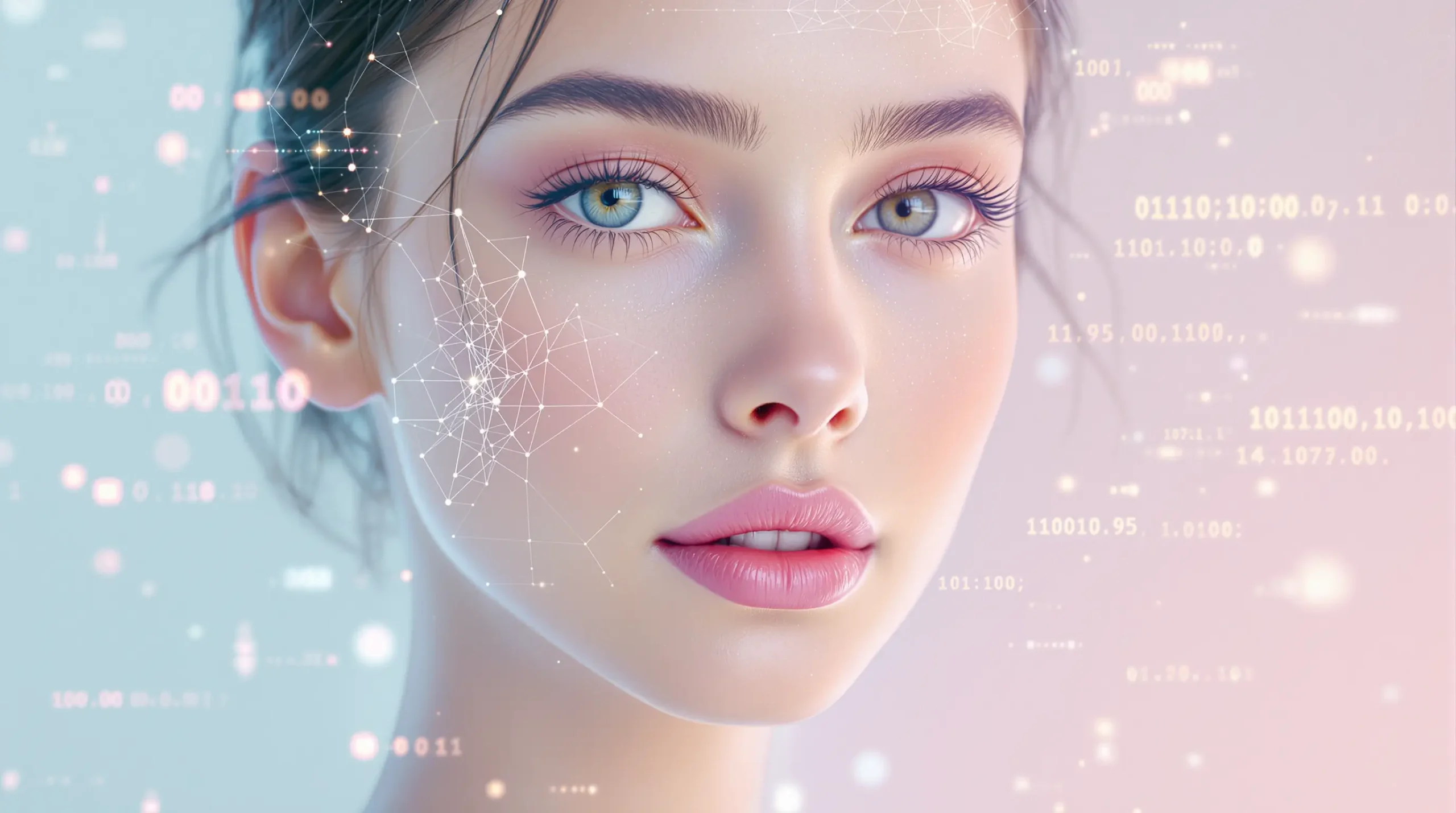What is AI Face Swap And How It Truly Works
- AI
- 6 min read
- July 17, 2025
- Harish Prajapat
The Curious Case of the Face Swap: What AI is Really Doing Here
Remember those early, clunky face swap? The ones where your nose ended up on your forehead and your friend’s chin looked like it was trying to escape your neck? Yeah, we’ve come a long way since then. What felt like a party trick a few years ago has evolved into something genuinely astonishing, thanks to the magic – or rather, the incredibly complex algorithms – of Artificial Intelligence.
But what exactly is face swap, beyond just putting someone else’s mug on your picture? At its core, it’s about seamlessly integrating one person’s face onto another’s body or an entirely different image, all while maintaining realistic lighting, skin tone, and perspective. It’s not just a cut-and-paste job; it’s a sophisticated digital transplant.

The “How” Behind the “Wow”: A Peek Under AI’s Hood
So, how does AI pull off this digital wizardry? It’s not a simple filter. We’re talking about deep learning models, primarily something called Generative Adversarial Networks (GANs). Don’t let the jargon scare you; it’s actually a pretty cool concept once you get your head around it.
Imagine two AIs going head-to-head, like a master forger and a meticulous art critic.
- The Generator: This AI is the artist. Its job is to create new, swapped faces. It takes your source face and tries to blend it onto the target image, aiming for a result that looks as natural as possible.
- The Discriminator: This AI is the critic. Its job is to look at the generated image and decide if it’s real or fake. Did the generator do a good job, or does it look obviously manipulated?
They train each other. The generator keeps trying to fool the discriminator, getting better and better at creating realistic swaps. The discriminator, in turn, gets better at spotting the fakes, pushing the generator to refine its craft even further. It’s an endless game of digital cat and mouse, and the result? Stunningly realistic face swaps that can fool the human eye.
Beyond GANs, techniques often involve facial landmark detection (identifying key points like eyes, nose, mouth), 3D face reconstruction to understand the contours of a face, and texture mapping to ensure skin tones and details match perfectly. It’s a symphony of algorithms working in harmony.
More Than Just Memes: Real-World Use Cases (The Good Side)
Okay, so we know it’s sophisticated, but is it just for making funny videos of your dog with a human face? (Admit it, you’ve thought about it.) Actually, the applications are far more diverse and, in some cases, genuinely beneficial.
- Entertainment & Media: This is probably the most obvious. Think about movie special effects – de-aging actors, bringing historical figures to life, or even creating entirely new characters. It’s a powerful tool for filmmakers and content creators to push boundaries without needing extensive prosthetics or re-shoots.
- Anonymity & Privacy: This might sound counter-intuitive, but hear me out. For activists, journalists, or even just everyday people who need to share footage or images without revealing identities, face swapping can be a powerful tool for anonymization. Imagine a documentary where victims’ faces are swapped to protect them while still allowing their stories to be told visually.
- Art & Creativity: Artists are always looking for new mediums and tools. Face swapping opens up new avenues for digital art, allowing for surreal compositions, explorations of identity, and unique visual narratives. It’s like a new brushstroke for the digital canvas.
- Education & Training: Believe it or not, this tech can be used in training simulations, especially for sensitive scenarios. Imagine a medical student practicing patient interactions where the “patient’s” facial expressions can be dynamically altered using AI to simulate various reactions.
The Flip Side of the Coin: The Bad and the Ugly
Now, for the part we really need to talk about. Like any powerful technology, AI face swap has a dark side. When misused, it can be incredibly damaging.
- Deepfakes & Misinformation: This is the big one. The ability to realistically put anyone’s face onto anyone else’s body means that fabricated videos and images can be created that are incredibly difficult to distinguish from reality. This has massive implications for politics, journalism, and personal reputations. Imagine a politician “saying” something they never did, or a celebrity caught in a non-existent scandal. The potential for chaos and manipulation is immense.
- Non-Consensual Content: Perhaps the most egregious misuse is the creation of non-consensual deepfake pornography. This is a severe violation of privacy and a form of digital assault, predominantly targeting women. It’s a chilling reminder that powerful tools can be used for truly malicious purposes.
- Erosion of Trust: When we can no longer trust our eyes and ears, the fabric of our digital society begins to fray. If every image or video can be questioned as potentially fake, how do we distinguish truth from fiction? This erosion of trust in digital media is a serious long-term consequence.
Walking the Ethical Tightrope: Considerations for Creators and Consumers
So, where does that leave us? Do we throw out the baby with the bathwater? Not necessarily. But we do need to be incredibly thoughtful about how this technology is developed, used, and consumed.
For creators, the rule is simple: consent is paramount. If you’re swapping faces, ensure you have explicit, informed consent from everyone involved. Period. And think critically about the purpose of your creation. Are you adding value, or are you potentially causing harm?
For consumers, skepticism is your new superpower. When you see something unbelievable online, especially video or images, pause. Ask yourself:
- Does this seem too perfect, or too shocking?
- Is the source reputable?
- Are there any subtle inconsistencies (lighting, pixelation, unnatural movements)?
Education is also key. The more people understand how this technology works, the better equipped they’ll be to spot fakes and demand responsible use.
The Human Element: It’s All About Intent
Ultimately, AI face swapping is just a tool. Like a hammer, it can build a house or cause serious injury. Its impact isn’t inherent in the technology itself, but in the hands that wield it and the intent behind those hands.
As this technology continues to evolve, our responsibility as digital citizens grows. Let’s use it to create, to entertain, to innovate – but always with a deep respect for privacy, truth, and the human beings on both sides of the screen. Because in a world where faces can be swapped with a click, our humanity is more important than ever.
Ready to truly transform your images? At MagicShot.ai, our advanced AI makes Face Swap incredibly simple, letting you effortlessly blend faces with stunning realism. Whether it’s for creative projects, playful experiments, or professional enhancements, experience the magic of seamless transformations right at your fingertips.
Frequently Asked Questions
Not at all anymore! While the underlying technology is incredibly complex, modern AI tools and apps have made face swapping surprisingly user-friendly. You don’t need to be a tech wizard or a professional editor. Often, it’s as simple as uploading two images and letting the AI do its magic. The real trick is choosing good source photos for the most realistic results.
That’s the fascinating – and sometimes concerning – part. Modern AI, especially with Generative Adversarial Networks (GANs), can produce incredibly realistic face swaps that are very difficult, sometimes nearly impossible, for the human eye to distinguish from authentic content. The quality keeps improving rapidly, which is why understanding the tech and its implications is so important.
This is a huge ethical and legal grey area, and the answer is generally no, and it can be highly problematic. Using someone’s likeness without their consent, especially for commercial use, defamation, or explicit content, can lead to serious legal consequences, including privacy violations, intellectual property infringement, and even criminal charges depending on the jurisdiction and the nature of the content. Always get explicit consent!
It’s getting harder, but there are still clues! Look for inconsistencies:
- Unnatural Blinking: Deepfake subjects sometimes blink too little, too much, or unnaturally.
- Odd Lighting/Shadows: Does the lighting on the face truly match the body and background? Are shadows where they should be?
- Blurry Edges/Artifacts: Sometimes there are subtle blurs or digital “noise” around the edges of the swapped face.
- Inconsistent Skin Tone/Texture: Does the skin on the face perfectly blend with the neck and rest of the body?
- Unusual Facial Movements/Expressions: Does the expression seem “off” or disconnected from the voice/context?
- Audio Mismatches: If it’s a video, does the audio sync perfectly with the lip movements? Does the voice sound authentic?
- Source Scrutiny: Always question the source of unusual or shocking content. Is it from a reputable outlet?
This is a serious issue.
- Document Everything: Take screenshots, save links, and note dates and times.
- Report It: Contact the platform where the content is hosted (social media, website, etc.) and report it for terms of service violations.
- Seek Legal Advice: Depending on the severity and jurisdiction, consult a lawyer specializing in digital rights, defamation, or privacy law.
- Spread Awareness: Inform trusted friends and family about what happened.
Absolutely! Beyond the obvious fun and entertainment (like swapping faces with friends for a laugh), the technology has powerful ethical applications:
- Anonymity: Protecting the identity of individuals in sensitive documentaries or news reports.
- Filmmaking: De-aging actors, creating seamless visual effects, or even bringing historical figures to life in a respectful way.
- Art and Creativity: Providing artists with a new medium for surreal art and digital storytelling.
- Training & Simulation: Creating realistic scenarios for medical or emergency training where dynamic facial expressions are crucial.



